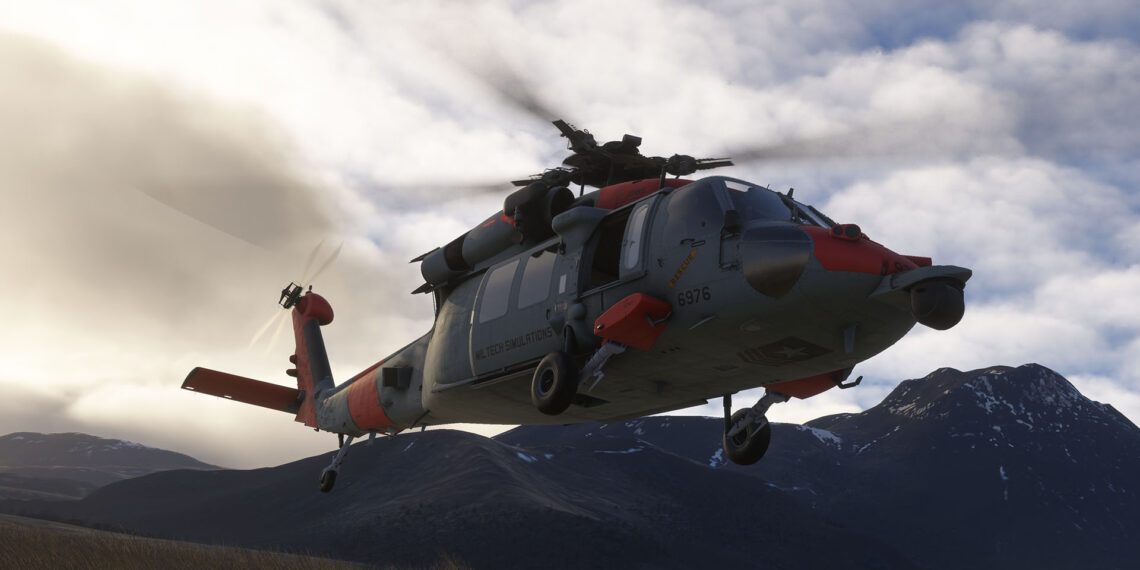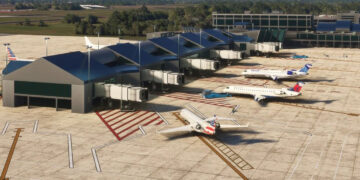Today Militech Simulations revealed new details about its upcoming Sikorsky MH-60 helicopter for Microsoft Flight Simulator 2024 and 2020.
The reveal focuses mostly on the avionics and systems, including the autopilot.
First of all, the developers provided some interesting information about the various displays and the keyset that we’ll find in the helicoptyer’s cockpit.
Flight Displays (FD): The FD is the primary source of flight data and situational awareness for the crew. Engine information, ADI, altimeters, airspeed, HSI and hover parameters are all displayed on the FD.
Key parameters like barometric pressure (BARO), heading (HDG), decision height (DH), and course (CRS) can be entered directly via the bezel buttons and the Universal Control Knob located on the top bezel.
Mission Displays (MD): The MD provides all mission-related information, including navigation aids, routing, maps, FLIR imagery, aircraft warnings, cautions, advisories, and system diagnostics. Due to the MD being largely undocumented and classified, our rendition is based on extrapolating the available public documentation and adapting it within the MSFS environment.
The MD—particularly the FLIR and map systems—remains the most actively developed area, with new details and improvements being added during Alpha and entering into Beta. Due to various technical limitations in MSFS, fully accurate FLIR implementation isn’t currently possible. However, we’re making significant progress beyond the typical “synthetic view” to achieve a more realistic and immersive look.
Keyset: The keyset is a central interface designed to streamline pilot and crew interaction with the aircraft’s digital systems. The Keyset allows for rapid data entry, system control (COMM, NAV, Weapons, ATAK, etc.), and navigation through menus across the flight and mission displays. We’ve designed the aircraft around the Keyset as the central hub for configuring the aircraft. Cabin Layouts (eg. SAR/ASW/Transport cabins), Weapon Loadouts (Hellfires/Torpedos), external tank configurations (R and T), and external loadout options (Pallets, Flags and Buckets) are all managed through the Keyset.
The Common Avionics Architecture System (CAAS) included in the Coast Guard Tango versions in the real world won’t be modeled due to feasibility reasons.
The navigation system will include a Web-based coordinate Flight Planner simulating how naval pilots load flight plans using data cartridges. You can see what it looks like in the screenshots below.
The aircraft will also seamlessly integrate with the default tablet in MSFS 2024, while coordinate-based Fly-to-Point waypoints can be inputted via the keyset.
We’ll be able to program Expanding Square, Sector Search, and Parallel Sweep search patterns via the keyset, alongside a “Direct Return to Base” function.
VOR, ILS, TACAN, and ADF will also be supported. Simbrief integration is being investigated but it’ll likely come after-release with a free update.
The helicopter will have a fully functional 6-degree-of-freedom Autopilot (AFCS) and a Stability Augmentation System (SAS). They’ll use rotor trim and acceleration control systems to steer the aircraft without interfering with pilot input.
This provides a “responsive autopilot system, with smooth and dynamic flying experience, with realistic hover attitudes and acceleration/deceleration regimes.”
The modes provided will be as follows:
- AUTO PLT: Maintains aircraft attitude below 50 knots or airspeed above 50 knots, with heading hold functionality.
- RAD ALT / BARO ALT: Holds the aircraft’s altitude at the moment of engagement, based on radar or barometric altitude.
- APPR / HOVER: Transitions the aircraft from cruise to a stable hover in minimal time. Hover altitude and lateral/longitudinal speeds are fully adjustable via cockpit knobs.
- CREW HOVER: Allows keybind control over lateral and longitudinal speeds for precise maneuvering during SAR operations.
- DEPART: Initiates a climb from hover to a safe altitude and accelerates to 120 knots as quickly as possible.
There won’t be an LNAV mode capable of following a flight plan. Force Trim is planned but will come with an update after release.
We also get to see a mini-scenery dedicated to Peñón de Vélez de la Gomera, which will be included in the package. The next reveal will focus on the dedicated mission system.
The aircraft is entering an early beta phase and the developer won’t announce a release date until it’s confident it can be met. While the goal is to release the MH-60 on PC and Xbox at the same time, for the moment, this is not set in stone.
If you want to see more before you move on to the gallery, you can check out the previous reveal and the initial announcement.
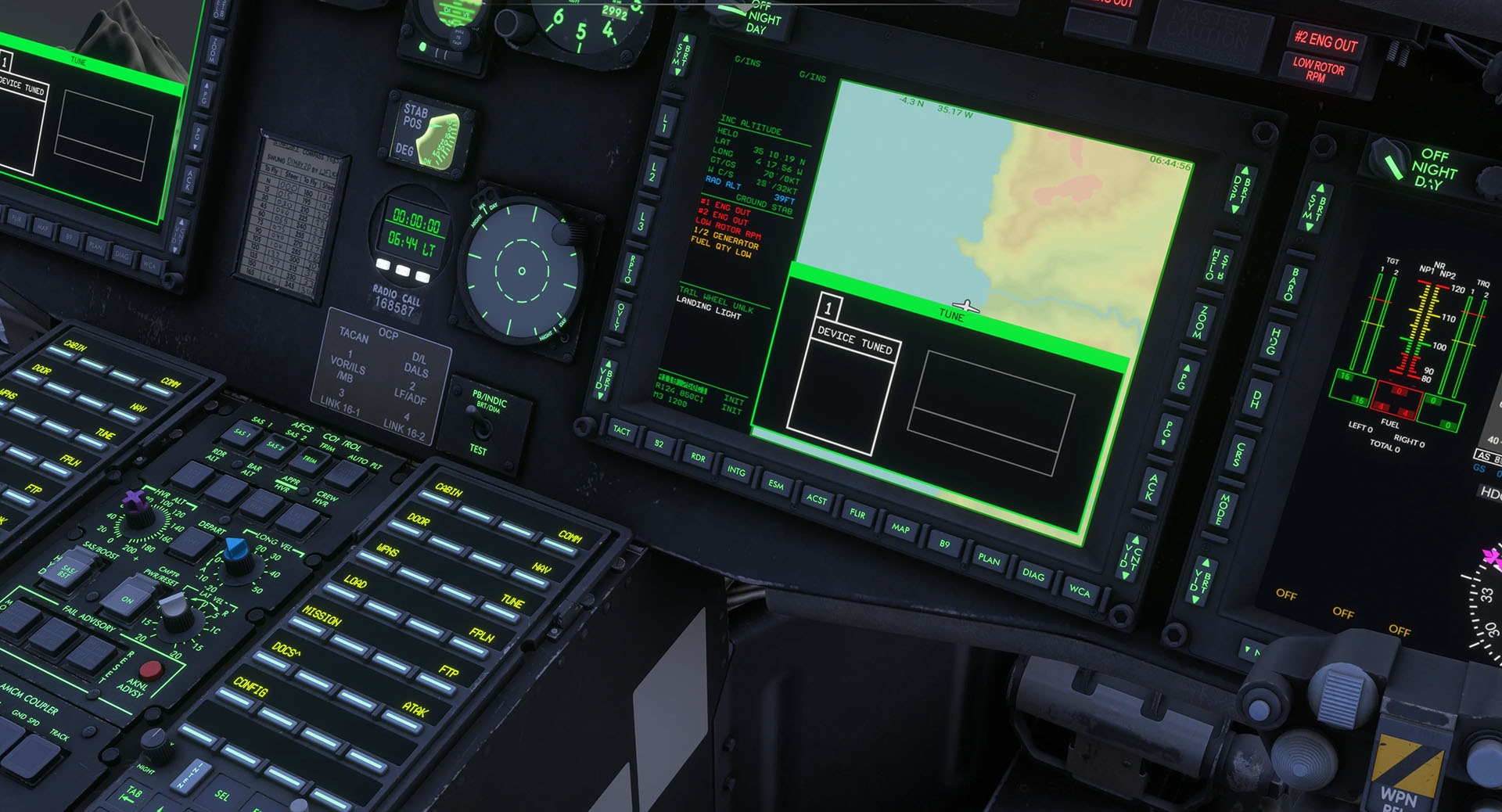
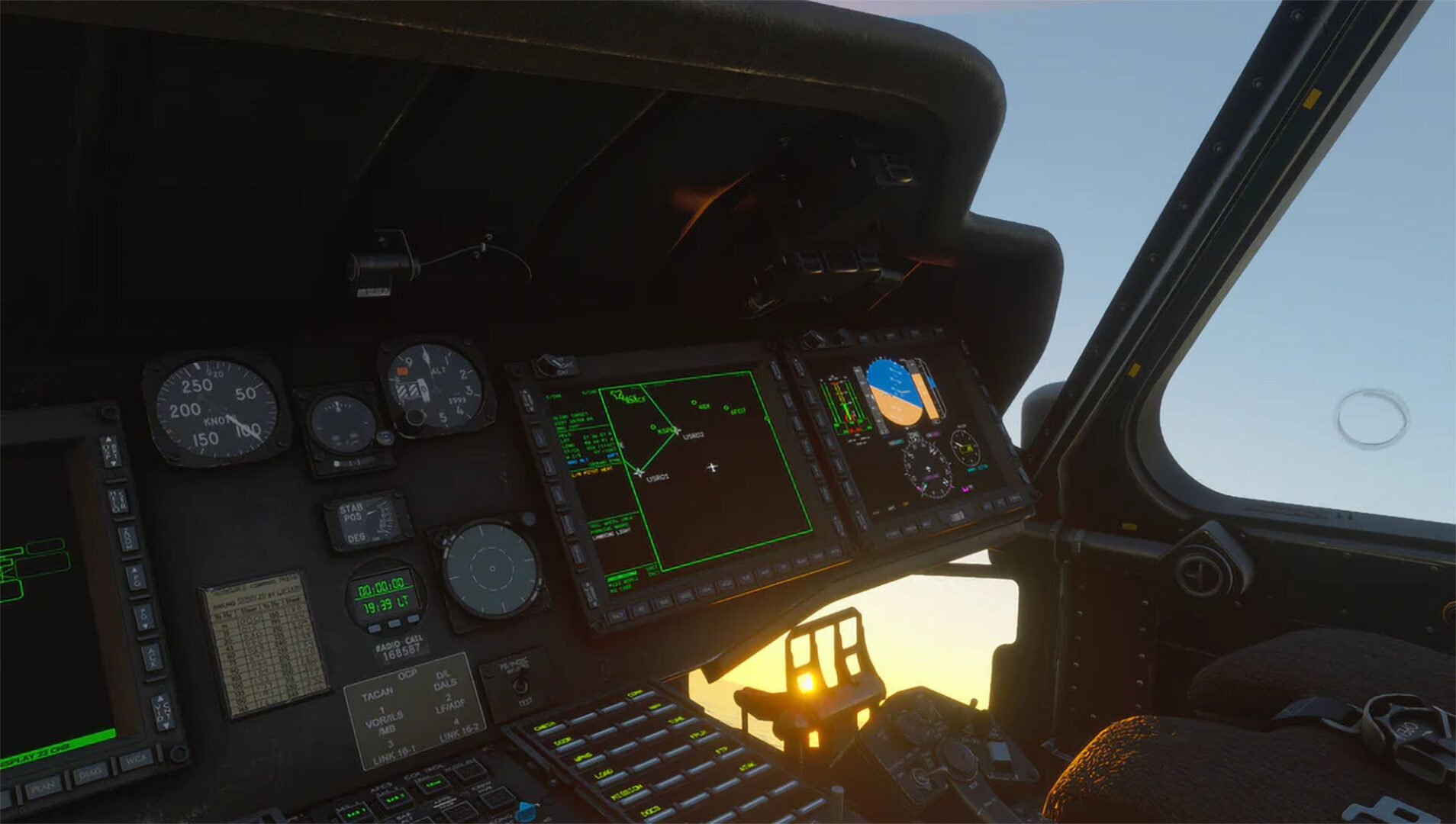
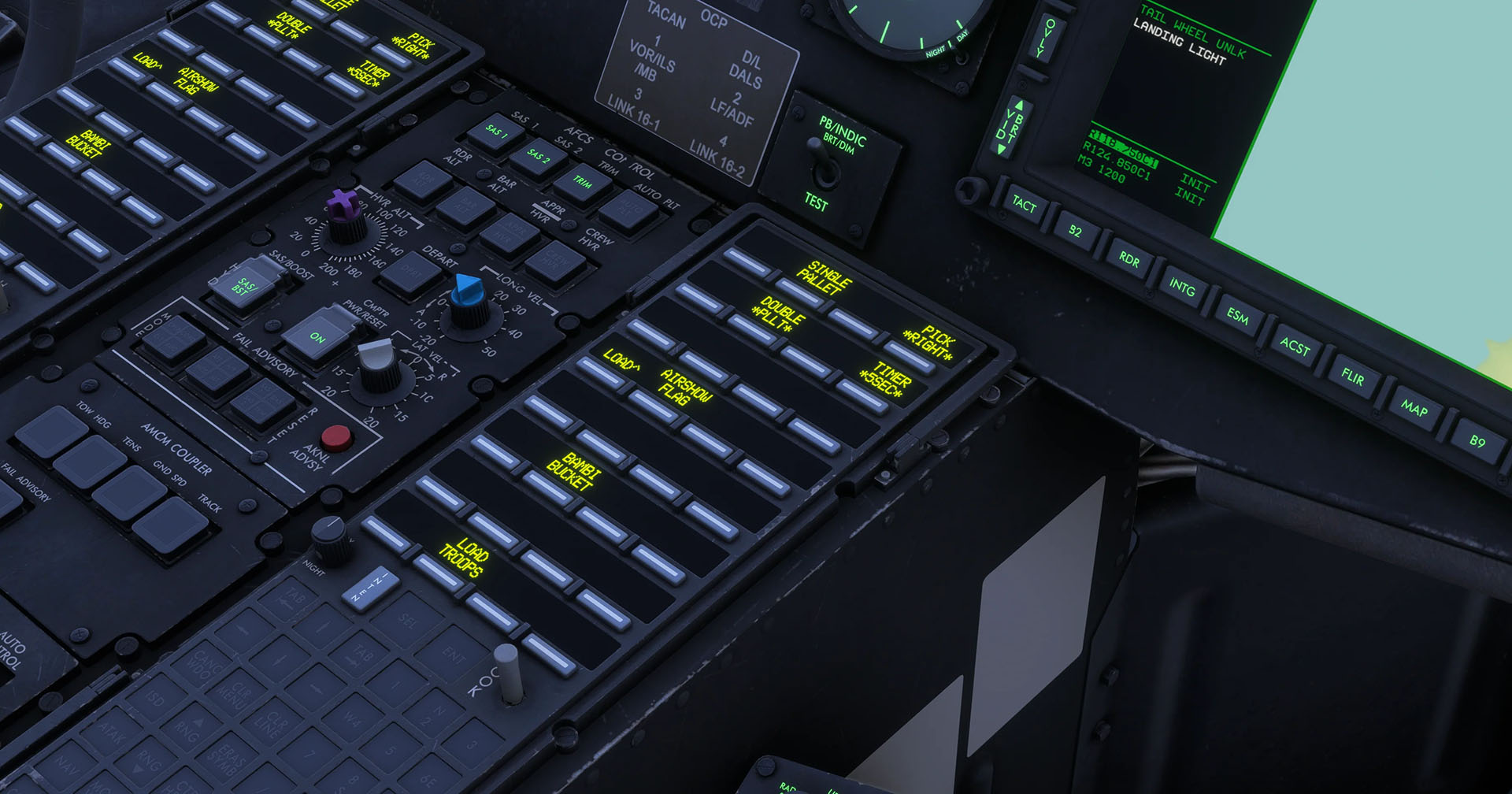
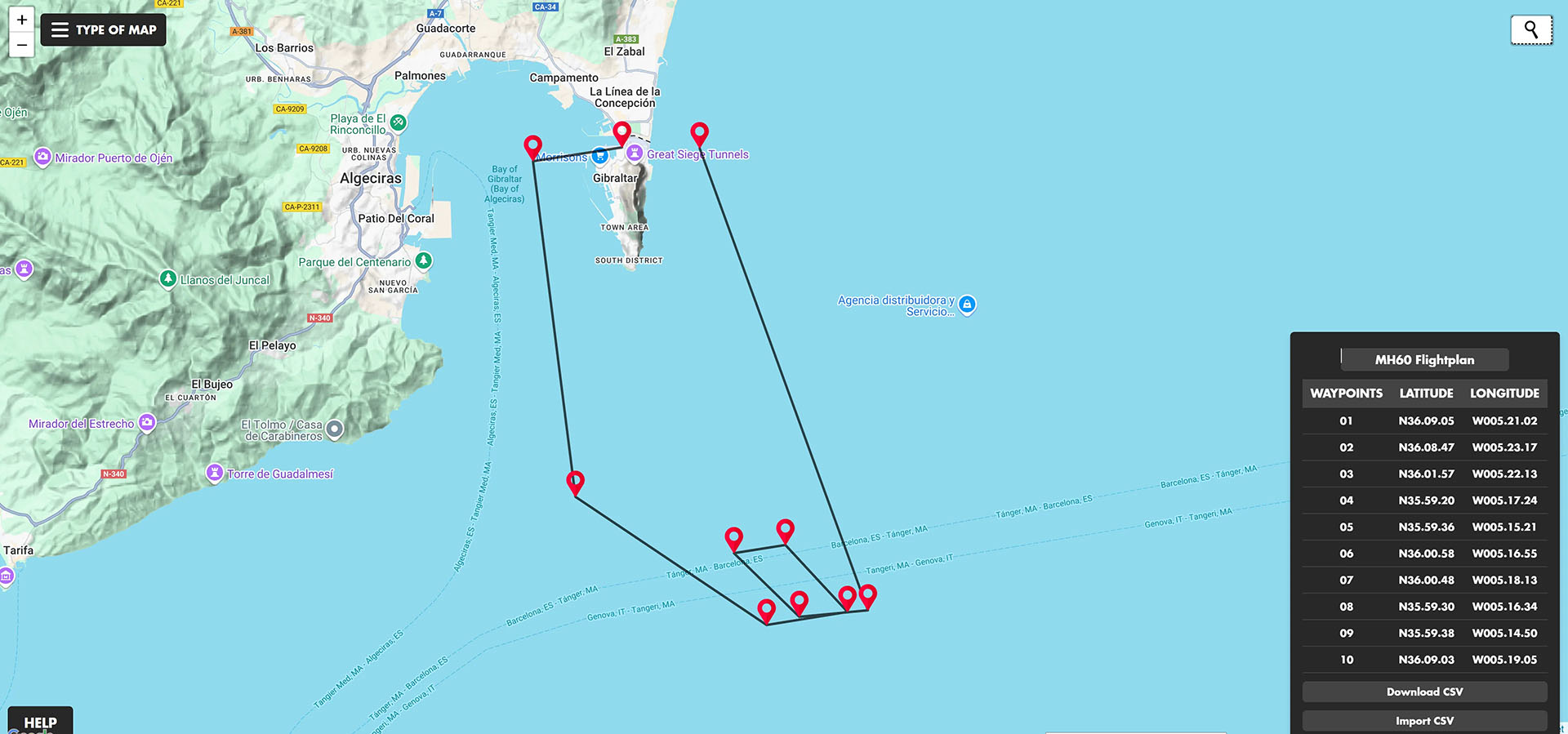
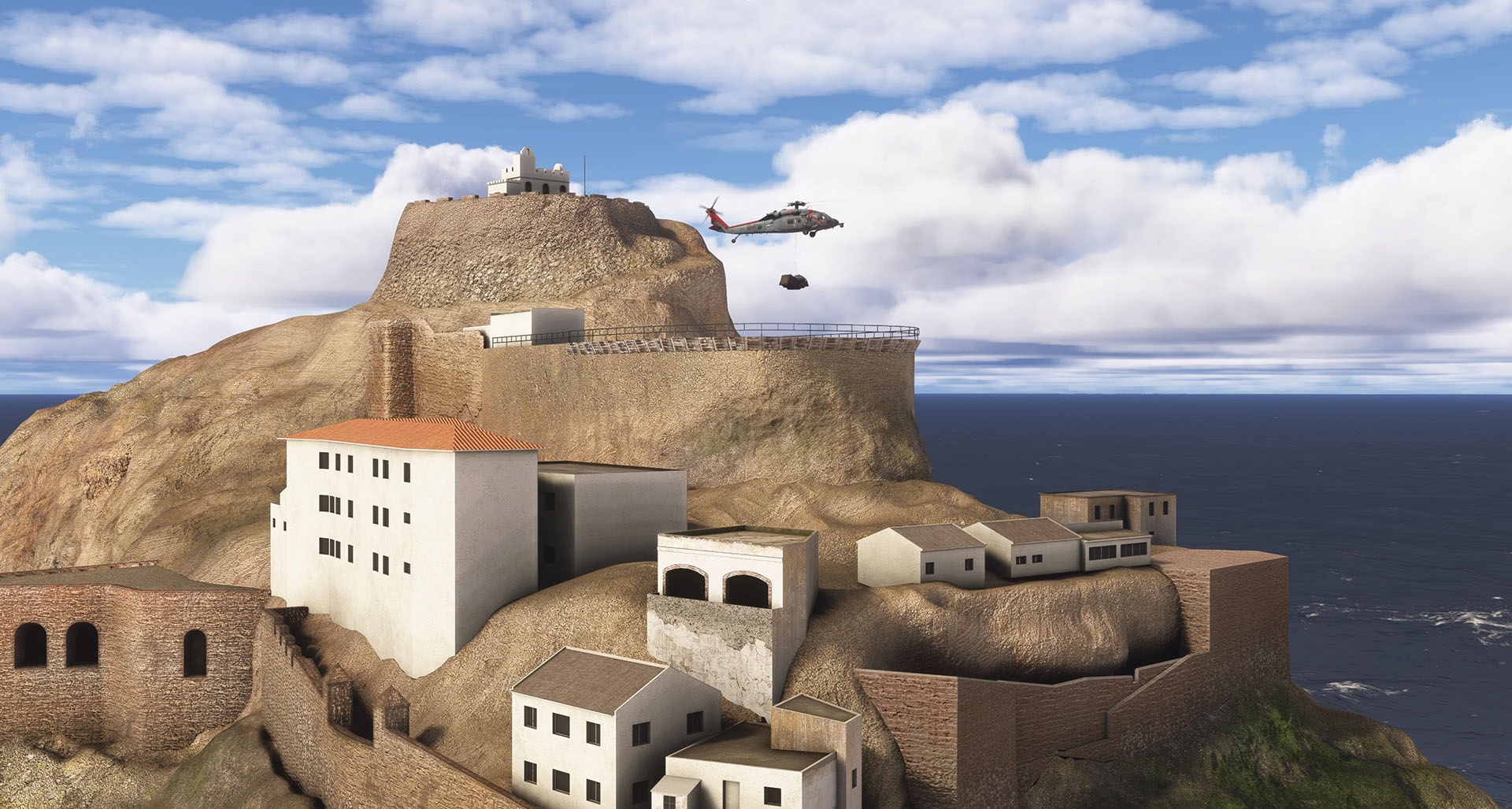
Microsoft Flight Simulator 2020 is available for PC and Xbox Series X|S. It’s worth mentioning that Fenix’s aircraft are PC exclusive.
Microsoft Flight Simulator 2024 is also available for the same platforms following its recent release in November. If you want to see the massive visual difference against Microsoft Flight Simulator 2020, you can enjoy our video and screenshot comparison.
A few weeks ago, we published an extensive interview with Head of Microsoft Flight Simulator Jorg Neumann about the present situation of the sim and the plans for the future.
Incidentally, a few days ago, Microsoft shared an extensive update about its plans for the sim, so you may want to read it to integrate what is said in this interview.
You can also check out our in-depth analysis of how much data the simulator downloads from the cloud, clearing the air from some widespread misinformation that has made the rounds over the past few months.

